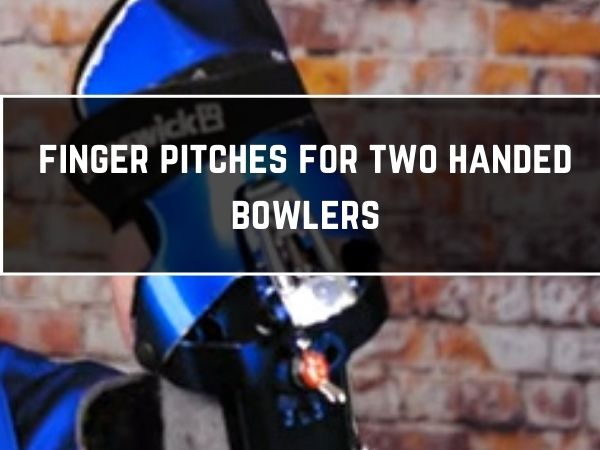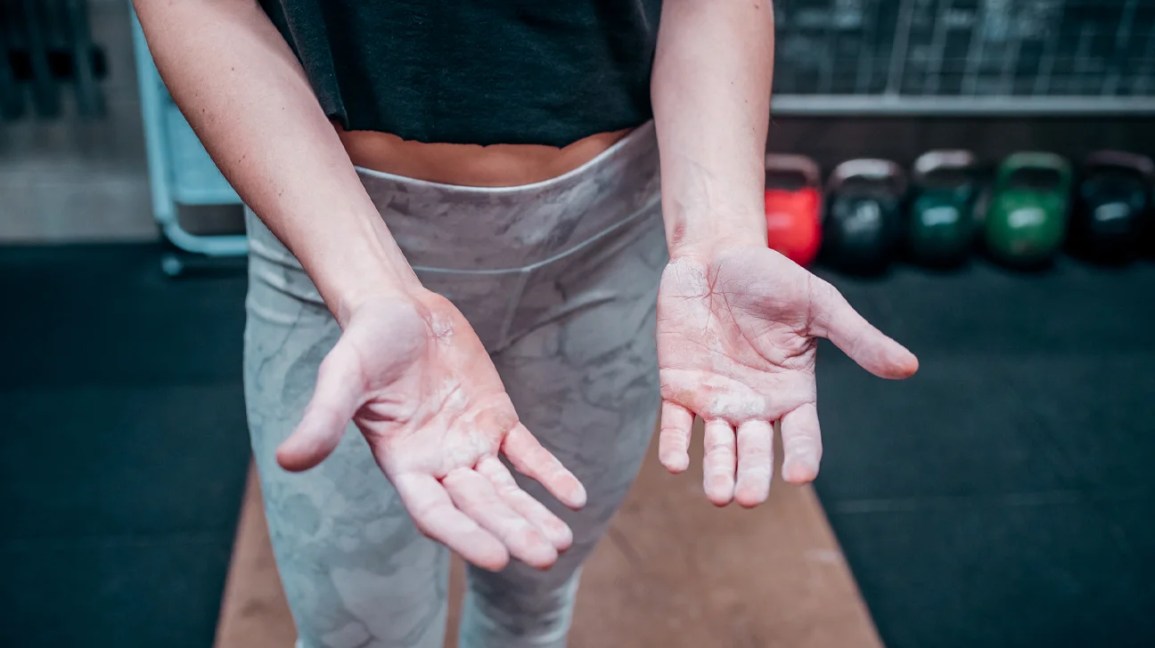
I get the question about finger pitches for two-handed bowlers all the time. Every time you ask a bowling coach or a pro bowler about the finger pitches, they will only tell you about pitches for right-handers and left-handers. Because two-handed bowlers are not that common, they often don’t mention finger pitches for two-handed bowlers. That’s frustrating, isn’t it? This surely warrants an article regarding finger pitches for two-handed bowlers. So if you are a two-hander looking for some answers, you are in the right place. Stay tuned to find out!
What is a Pitch of a bowling ball?
So the angle of the thumb and finger holes into a bowling ball is called pitch. There are three types of pitches in bowling.
Forward Pitch— When your thumb and/or bowling fingers are going into the holes towards the middle of your grip, we like to call it the Forward pitch. This is towards the palm.
Reverse Pitch— When your thumb and/or fingers are doing the opposite, meaning, they are getting away from the middle of your grip, we consider it the Reverse pitch. This is away from the palm.
Lateral Pitch— And the Lateral pitch is when you angle your thumb from left to right.
The pitches of bowling balls are mainly for comfort. The modern bowling balls hold on to you better. So you don’t have to struggle much to hold on to it. To understand better, imagine a bowling ball in your hand. Where should it face? To the bowling pins so that rolling becomes easier. What does it indicate? This indicates that the ball has more forward pitch for the thumb and more reverse pitch for the middle and ring fingers.
What pitch do two handed bowlers use for their finger holes?
Everybody’s need for finger pitches is different due to individual physical anatomy. Generally, what I see among one-handed bowlers is that they use the conventional three fingers. They follow the basic rules on the basis of spans and flexibility to find out whether it is a forward pitch or a reverse pitch. If you don’t use your thumb despite being a one-handed bowler, you may get away even if you use the basic span rule.
With a two-handed bowler, things are a bit different. I will start with two-handed bowlers with the right dominant hand. The best pitch for them would be to use half an inch left in the middle finger and 3/8 inch right in the ring finger as far as forward and reverse. Most right-handed two-handers use an 8th forward in the middle finger and 5/8 reverse in the ring finger. But how do you get to that? Most two-handed bowlers with neutral pitches don’t have much axis tilt. Also, a lot of them with a combination of their axis tilt and their PAP location are going to often clip the middle finger with that first oil ring or possibly even more.
So how does that work? Let’s say that the first change was made in the finger and thumb in forward and reverse. Most two-handed bowlers don’t have much tilt and they often increase that. If you can recall Mo Pinel’s performance fitting, then you know that a method can be used to enhance axis tilt. You can do that by making your bowling hand more middle-finger dominant. This allows two-handed bowlers to keep the middle finger in the ball longer, getting the ring finger out a lot quicker, and that will increase your axis tilt.
Mo Pinel recommends 3/8 forward from your base, fit in the middle, and 3/8 reverse from the base fit in the ring. That’s the only change you will have to make.
Some two-handed bowlers are rev dominant and they have an average or high ball speed. For them, I would recommend taking that 3/8-3/8 and rolling it all reversed and another quarter. That’s how you get to 1/8 forward and 5/8 reverse. The roll reverse will get the fingers out quickly and evenly. This will help manage the rev rate to ball speed ratio. This pitch is also comfortable for two-handed bowlers who don’t use their thumbs.
The last difference you will see is the fact that we roll the pitches left. Why is it done this way? This will get the first oil ring further from the fingers. This will give a two-hander more clearance and clip the holes on more layouts. So combining the roll left and roll reverse you can make your ball more middle-finger dominant. This is what two-handed bowlers should consider a base starting pitch.
When you first do new pitches you will probably start to notice some things on your finger. I recommend taking a good look at the direction that your finger’s last joint points and analyzing the physical anatomical needs of your hand. This will help you make adjustments better for perfection. If you start to feel some rubbing, you can manipulate your fingers in that lateral pitch until that goes away.
Conclusion
If you were having problems due to the wrong pitch, your solution is right here. I hope this article has cleared things up for you and provided a good base point for you to start from when it comes to pitches. If you have any further questions, leave them down in the comment section. As always, keep having fun when bowling. So good luck, my bowler mates. Ciao!

Passionate Bowler and Bowling Enthusiast
Jess Pinelli is a dedicated bowling enthusiast with a deep love for the sport that spans over 6 years. With numerous strikes, spares, and a few gutter balls under hes belt, he has honed his skills on lanes across the country. Pinelli’s journey in the world of bowling has been a remarkable one, from casual weekend games with friends to competitive league play and even a few local tournaments.
Driven by her passion for the game, Pinelli decided to channel her expertise and knowledge into the digital realm, becoming a prolific author on this bowling website. She’s your go-to source for everything bowling-related, from mastering the perfect hook to choosing the right bowling ball and even navigating the world of bowling etiquette.
When she’s not busy writing informative articles or reviewing the latest bowling gear, you’ll likely find Pinellis at her favorite local bowling alley, helping newcomers improve their game or enjoying some friendly competition with fellow bowlers. She firmly believes that bowling is not just a game but a community, and she’s committed to fostering that sense of camaraderie both online and offline.



